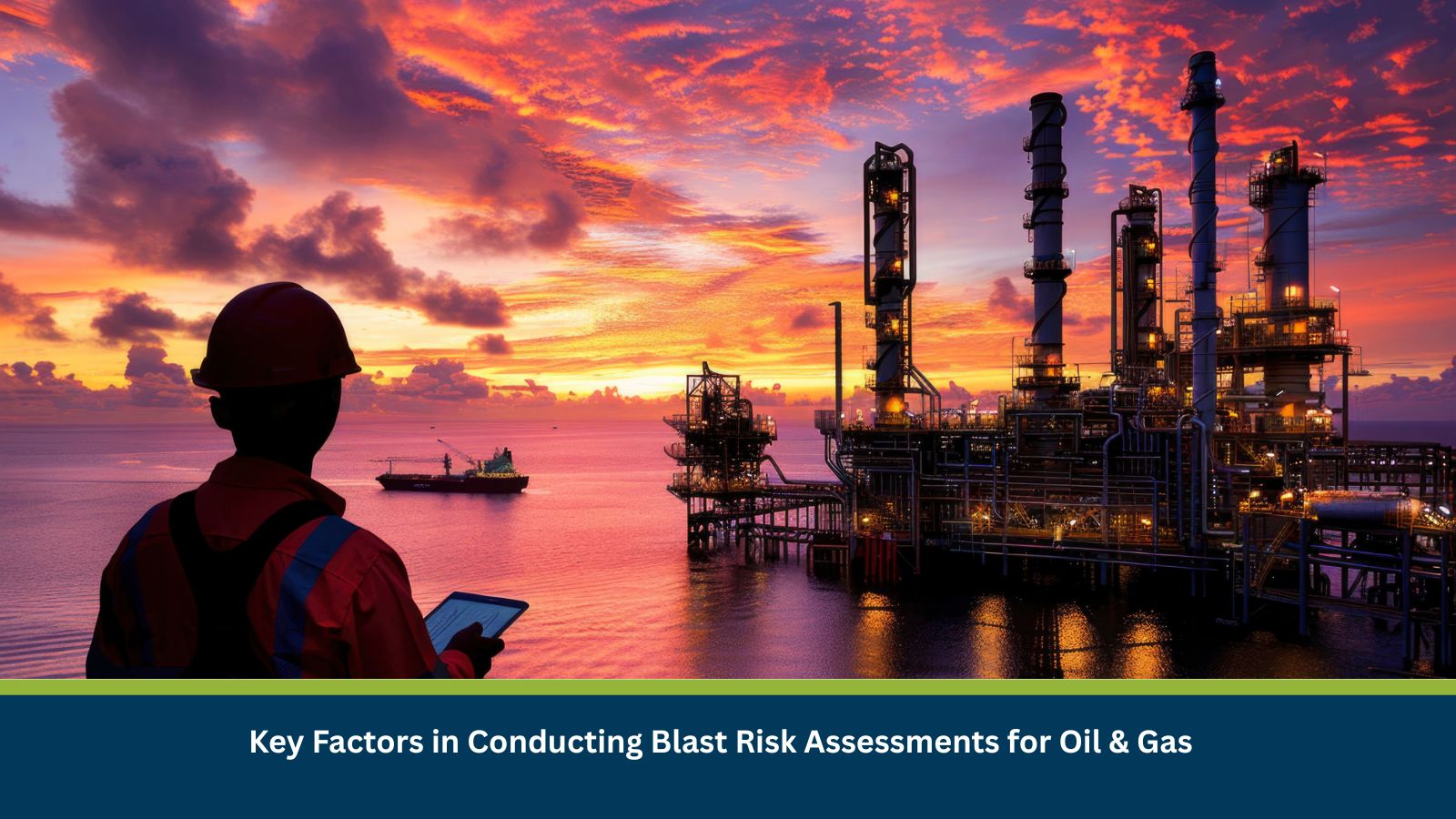The Criticality of Blast Risk in Oil & Gas Operations
Oil and gas facilities operate in inherently high-risk environments, where flammable materials, high pressures, and complex processes coexist. Over the past two decades, several catastrophic incidents from refinery explosions to offshore platform accidents have underscored the devastating human, financial, and reputational impacts of inadequate Blast Risk Assessment (BRA) and safety planning.
In this industry, a single ignition event can propagate with extraordinary speed, producing overpressures capable of damaging equipment, collapsing structures, and causing mass casualties. Beyond physical consequences, such events can trigger prolonged operational shutdowns, litigation, and regulatory scrutiny.
For this reason, Oil and Gas Safety Risk Assessment has evolved into a strategic necessity. Regulators, insurers, and investors increasingly expect organisations to demonstrate proactive management of explosion and overpressure risks through robust, documented Blast Risk Assessments integrated within enterprise risk frameworks.
Understanding Blast Risk Assessment
A Blast Risk Assessment is a structured, analytical process used to evaluate the likelihood and potential consequences of explosion events in facilities where flammable substances are stored or processed. It forms a crucial component of Process Safety Management (PSM) and aims to ensure that design and operational decisions are informed by quantitative risk understanding.
The BRA process typically involves:
- Defining Scenarios – Identifying credible explosion sources such as vapor cloud explosions, confined releases, or BLEVE (Boiling Liquid Expanding Vapor Explosion) events.
- Evaluating Consequences – Estimating overpressure effects, fragment projection, and thermal radiation on personnel and assets.
- Assessing Frequency – Using historical data and probabilistic methods to quantify event likelihood.
- Establishing Mitigation Strategies – Recommending engineering or administrative controls to reduce risk to tolerable levels.
The ultimate goal is to safeguard people, critical assets, and business continuity – ensuring compliance with industry standards such as API RP 752 (Facility Siting) and API RP 753 (Portable Buildings).
Core Elements of an Effective Blast Risk Assessment
Conducting a comprehensive BRA requires multi-disciplinary collaboration — combining engineering design, safety management, and intelligence analysis. Key factors include:
1. Hazard Identification (HAZID)
Early identification of explosion sources is vital. This includes potential leaks from pipelines, process vessels, storage tanks, and compressor systems. A structured HAZID process ensures no credible scenario is overlooked.
2. Explosion Risk Analysis
This step quantifies how ignition sources interact with flammable clouds. Explosion Risk Analysis integrates process data, dispersion modelling, and ignition probability to determine realistic event outcomes.
3. Vulnerability and Exposure Assessment
Once overpressure effects are known, the next step is to evaluate potential impacts on personnel, control rooms, and safety-critical equipment. This allows risk prioritisation and targeted design reinforcement.
4. Mitigation and Design Controls
Mitigation measures may include blast walls, building siting adjustments, explosion-resistant structures, or automated shutdown systems. Each recommendation should be tied to quantified risk reduction and cost-benefit outcomes.
An effective Blast Risk Assessment should also document assumptions, data sources, and uncertainty parameters ensuring transparency and audit readiness.
Tools, Technology, and Overpressure Modelling
Modern Overpressure Modelling tools have transformed the precision and efficiency of BRAs. Computational Fluid Dynamics (CFD) simulations and 3D blast mapping allow engineers to visualise pressure waves and assess their interaction with structures and equipment layouts.
Tools like DNV’s PHAST and Safeti are widely used for probabilistic consequence analysis, helping predict pressure contours and thermal radiation levels across facility zones.
Additionally, Facility Siting Studies (FSS) use this modelling data to ensure that occupied buildings and control rooms are located outside high-risk overpressure zones.
When engineering precision meets data-driven intelligence, blast resilience becomes both predictive and adaptive.
From Assessment to Resilience: Embedding Learnings
A Blast Risk Assessment is not a one-time compliance exercise; it must evolve with facility modifications, process changes, and new learnings from incidents. Embedding BRA outcomes into Process Safety Management ensures that design and operational safeguards remain relevant and effective.
Leadership commitment is critical. Regular reviews, training, and simulation exercises should reinforce a culture of safety ownership. Continuous learning from near-misses, audits, and external benchmarks strengthens institutional resilience.
Ultimately, Explosion Risk Analysis is about protecting more than assets — it’s about protecting lives, communities, and business continuity in one of the world’s most hazardous industries.
Partner with MitKat
At MitKat Advisory, we help energy and infrastructure clients conduct precise, compliant Blast Risk Assessments that strengthen safety and operational resilience. From HAZID to Overpressure Modelling, our experts deliver actionable insights to safeguard people, assets, and performance.
Partner with MitKat for intelligent, risk-informed industrial safety.






